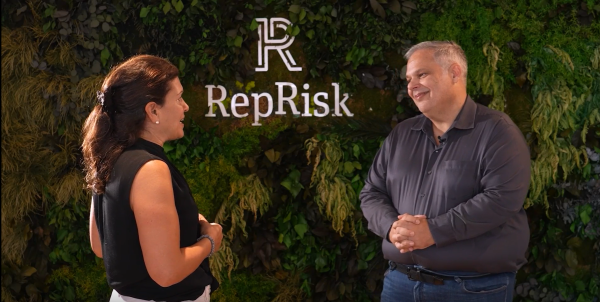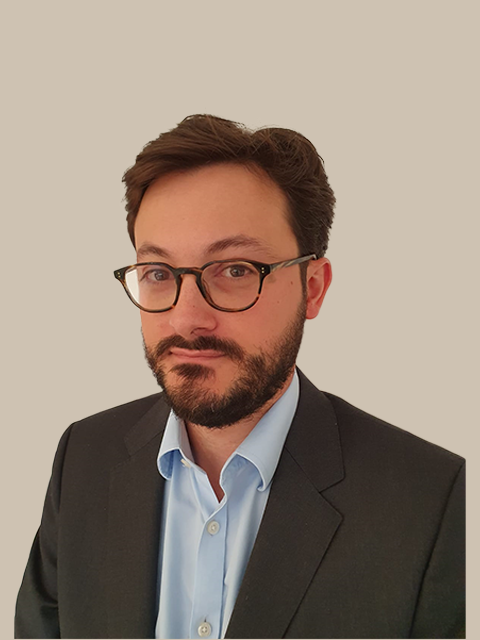# RepRisk interviews Karin Lurvink, Investment Risk Manager at PGGM Investments
1. RepRisk: Please provide some insight into your specific role at PGGM Investments (PGGM) and the work that you and your team do.
Karin Lurvink: I work as an Investment Risk Manager on the Risk Analysis team at PGGM. PGGM manages the pension money of several pension funds, of which PFZW – the pension fund for Dutch healthcare workers – is the largest. The Risk Analysis team challenges new investment proposals of the investment teams and new policy proposals of the strategy team. We do this by analyzing financial risks, including ESG risks. These analyses result in risk opinions and research reports.
2. RR: What is the role of ESG integration within PGGM, and how does it intersect with the overall fiduciary duty to maximize long-term return?
KL: PGGM is the second largest pension fund asset manager of the Netherlands. The companies in which we invest have an impact on the world (inside-out), but the world also impacts the companies (outside-in). PGGM has a fiduciary duty to achieve our clients’ financial pension ambition, but also to take into account the potential long-term impact of investment decisions on environmental, social, and governance factors. Additionally, our clients feel responsible and want to contribute to a more sustainable world. To do so, PGGM has integrated ESG risks and opportunities in its investment process.
3. RR: What are PGGM’s priorities when it comes to ESG and responsible investing, and how does RepRisk data facilitate those priorities?
KL: PGGM’s ESG integration focuses on financial materiality. Material ESG risks have a significant impact on the underlying investment because it increases the risk, improves the returns, or saves costs. We leverage RepRisk’s ESG risk data to gauge, for example, the public opinion on climate-related topics in certain areas such as biomass or coal plants. We use this as one of the elements to estimate the transitional climate risk. Further, PGGM’s Risk Analysis team uses RepRisk’s ESG risk data to screen the companies’ underlying new investment proposals and to monitor existing investments through several RepRisk Watchlists.
Other responsible investment strategies of PGGM include excluding certain investment categories – such as controversial weapons – reducing the carbon emissions of the equity portfolio, and investing in solutions that contribute towards the realization of specific Sustainable Development Goals (SDGs) within the following themes: climate change and environmental pollution, water shortages, food security, and healthcare. In 2019, we had invested 16% of the total assets under management in companies and projects that contribute towards one or more of the SDGs.
4. RR: In what ways do frameworks like the SDGs or SASB Materiality Map guide the investment strategies of PGGM?
KL: As mentioned before, PGGM’s ESG integration focuses on materiality. The SASB materiality map is a useful tool to estimate financially material ESG risks of specific sectors. Risk Analysts uses the SASB materiality map to challenge new investment proposals within Infrastructure, Private Equity, and Private Real Estate.
5. RR: What trends do you expect for the field of ESG in the coming years, specifically in the arena of pension funds?
KL: I expect that the fiduciary duty of pension funds will become broader with a stronger focus on ESG impact, and that other responsible investment regulations will become stricter. I also expect that the E of ESG will become a central element within society and that pension participants increasingly demand that their pension does not harm the environment or society. PGGM occasionally already receives e-mails from participants, in which they ask us to elaborate on or divest from certain (passive) investments in specific areas, such as in Myanmar.
Conclusion
Dr. Karin Lurvink is an Investment Risk Manager on the Risk Analysis team at PGGM, the second largest pension fund asset manager of the Netherlands. PGGM leverages RepRisk’s daily-updated, risk-focused data to meet the priorities of their ESG integration strategy and bolster functions such as gauging transitional climate risk, screening new investment proposals, and monitoring existing investments. RepRisk is pleased to support PGGM’s work to analyze and account for the long-term impact of their investment decisions with respect to ESG factors.
Bio — Dr. Karin Lurvink
Dr. Karin Lurvink is a historian and Investment Risk Manager for Risk Analysis at PGGM Investments with a special interest in environmental and social responsibility. She is responsible for research and the ESG risk integration challenge within private markets. She also challenges the sustainability policy for PGGM’s biggest client PFZW. Karin has over 10 years of research experience. She worked previously as researcher at VU University Amsterdam, where she investigated and published on the economic impact of slavery in the Netherlands in the eighteenth and nineteenth century and on labor conditions and racism of former slaves in the United States in the nineteenth century. In 2020, she received the Phil Scranton Prize of best article in the American Journal Enterprise & Society of the Business History Association.



